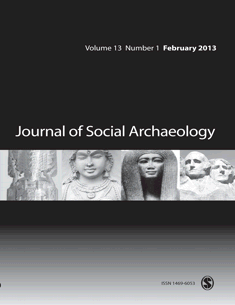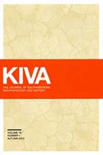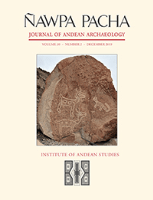
Open Archaeology
Scope & Guideline
Fostering Interdisciplinary Dialogues in Archaeology
Introduction
Aims and Scopes
- Interdisciplinary Research:
The journal encourages the application of methodologies from various fields such as anthropology, history, and environmental science to enhance archaeological interpretations. - Technological Integration:
Open Archaeology highlights the use of advanced technologies, including 3D modeling, digital archaeology, and data analysis techniques, to document and analyze archaeological materials and sites. - Microhistorical Approaches:
A significant focus on microhistory allows for detailed examinations of local contexts and the everyday lives of individuals and communities in the past. - Cultural and Social Dynamics:
Research often explores the social structures, cultural practices, and economic interactions within historical communities, emphasizing the complexities of human behavior over time. - Environmental Interactions:
The journal addresses human-environment relationships, examining how past societies adapted to and transformed their landscapes.
Trending and Emerging
- Digital Archaeology and Virtual Reality:
The integration of digital tools and virtual reality in archaeological practice is rapidly growing, allowing for innovative ways to visualize and engage with archaeological data. - Microhistorical and Contextual Analyses:
There is an increasing emphasis on microhistorical approaches that seek to understand local histories and individual experiences, contributing to a richer narrative of the past. - Sustainability and Circular Economy in Archaeology:
Emerging research explores sustainability practices and the concept of circular economies in historical contexts, linking past practices to modern sustainability challenges. - Interdisciplinary Collaboration:
Collaboration across disciplines is on the rise, with archaeology increasingly intersecting with fields like sociology, ecology, and technology to produce more comprehensive studies. - Human-Animal Relations:
Research focusing on the relationships between humans and animals, including domestication patterns and symbolic interactions, is gaining traction, reflecting broader interests in ecological and social dynamics.
Declining or Waning
- Traditional Pottery Studies:
Research focusing solely on traditional pottery styles and classifications has decreased, as scholars increasingly integrate broader contextual analyses and technological methods. - Standardized Excavation Reports:
The trend towards detailed, standardized excavation reports has diminished, with a shift towards more narrative-driven and interpretative approaches that emphasize storytelling over mere documentation. - Regional Focus in Isolation:
Studies that concentrate solely on specific regions without broader comparative analyses are becoming less common, as researchers seek to understand global patterns and interactions. - Static Historical Narratives:
There is a noticeable decline in research that presents static historical narratives; contemporary archaeology favors dynamic interpretations that consider multiple perspectives and complexities.
Similar Journals

SOUTH AFRICAN ARCHAEOLOGICAL BULLETIN
Connecting Scholars to South Africa's Archaeological Legacy.Welcome to the SOUTH AFRICAN ARCHAEOLOGICAL BULLETIN, a premier academic journal dedicated to the dynamic field of archaeology in South Africa and beyond. Published by the SOUTH AFRICAN ARCHAEOLOGICAL SOC, this journal boasts an impressive Q1 ranking in both Archaeology (arts and humanities) and Archaeology categories as of 2023, placing it among the top tier of scientific journals in its discipline. With an extensive publication history spanning from 2002 to 2023, it serves as a crucial platform for disseminating pioneering research and scholarly discussions that illuminate the rich tapestry of South African archaeological heritage. Although it does not currently offer open access, the journal’s rigorous peer-review process, combined with its standing in the Scopus rankings—where it ranks 78 out of 413 in the arts and humanities and 75 out of 354 in social sciences—underscores its commitment to academic excellence. Researchers, professionals, and students alike will find this journal an essential resource for exploring innovative methodologies, archaeological discoveries, and theoretical advancements shaping the understanding of human history.

JOURNAL OF SOCIAL ARCHAEOLOGY
Advancing Understanding of Past SocietiesJOURNAL OF SOCIAL ARCHAEOLOGY, published by SAGE Publications Ltd, stands at the forefront of interdisciplinary research where archaeology meets social science. With an ISSN of 1469-6053 and an E-ISSN of 1741-2951, this esteemed journal provides a platform for investigation into the social dimensions of past human behaviors and interactions. Since its inception in 2001, it has garnered substantial recognition, currently ranked in the Q1 quartile in both Archaeology and Arts and Humanities (miscellaneous) categories for 2023, positioning it among the top-tier journals within these fields. Additionally, its Scopus rankings, where it holds a notable placement of #35/354 in Social Sciences and #124/552 in Arts and Humanities, underscore its significant impact, falling within the 90th and 77th percentiles, respectively. The journal aims to foster innovative research that challenges traditional archaeological narratives and enriches our understanding of the social constructs and cultural contexts of the past. Although not open access, JOURNAL OF SOCIAL ARCHAEOLOGY remains an essential resource for scholars, professionals, and students dedicated to unlocking the complexities of human history through a social lens.

Kiva-Journal of Southwestern Anthropology and History
Celebrating the Legacy of Southwestern CulturesKiva - Journal of Southwestern Anthropology and History is a distinguished academic journal published by Routledge Journals, Taylor & Francis Ltd, that serves as a vital resource for scholars in the fields of anthropology, archaeology, and history. With an ISSN of 0023-1940 and an E-ISSN of 2051-6177, this journal has established itself as a significant avenue for scholarly communication since its inception in 1964. It consistently ranks in the top quartiles, including Q1 in Archaeology and Q2 in Anthropology, reflecting its high impact and rigorous peer-review process. Covering a wide array of topics pertinent to the Southwestern United States, Kiva invites original research articles, reviews, and methodological papers that advance understanding of the region's rich cultural heritage and historical narratives. While currently not open access, its commitment to disseminating quality research makes it an essential reading for researchers, professionals, and students aiming to explore the multifaceted dimensions of southwestern studies.

Nawpa Pacha
Bridging Disciplines for a Deeper Understanding of Heritage.Nawpa Pacha, a prestigious journal published by Taylor & Francis Ltd, stands as a significant platform for advancing research in Archaeology within the fields of Arts and Humanities. Since its inception in 2019, it has rapidly established itself with an impressive impact, evidenced by its categorization in the Q1 quartile for Archaeology and its significant rankings—placing it at Rank #88 in the Arts and Humanities category and Rank #86 in the Social Sciences. Published in the United Kingdom, the journal aims to foster interdisciplinary dialogue and promote scholarly work that contributes to the understanding of archaeological heritage and practices. Researchers, professionals, and students alike will find this journal indispensable for disseminating innovative methodologies, theoretical frameworks, and case studies that push the boundaries of archaeological inquiry. Whether seeking to explore historical narratives or contemporary archaeological challenges, Nawpa Pacha serves as a vital resource in the ever-evolving landscape of archaeological research.

Complutum
Exploring the Depths of History and ArcheologyComplutum, published by the Universidad Complutense de Madrid, serves as a leading academic journal in the fields of Archeology and History. With a notable track record since its inception and a convergence stretching from 2011 to 2024, the journal has established itself as a pivotal platform for scholarly discourse in these disciplines. Recognized in 2023 with a Q2 ranking in Archeology and Arts and Humanities, as well as a Q1 ranking in History, Complutum demonstrates its commitment to quality research, attracting contributions from leading experts and emerging scholars alike. The journal's impact is further evidenced by its competitive ranks within various Scopus categories, particularly its placement in the 77th percentile for History and 64th for Archeology. As a printed publication without open access options, Complutum caters to a specialized audience, providing a forum for in-depth analysis and discussion on archaeological findings and historical interpretations. Researchers, professionals, and students engaged in these fields will find Complutum an invaluable resource for advancing knowledge and fostering academic collaboration.

Journal of Maritime Archaeology
Exploring the Depths of Maritime HeritageThe Journal of Maritime Archaeology, published by Springer, is a premier scholarly platform dedicated to advancing the understanding of maritime cultural heritage and underwater archaeology. With an ISSN of 1557-2285, this journal has continuously contributed to the field since its inception in 2006 and is set to celebrate its evolution until 2024. Holding a distinguished position as a Q1 journal in the field of Archaeology (Arts and Humanities) as of 2023, it ranks impressively at #96 out of 413 journals in its category, placing it in the 76th percentile of its field. This journal aims to disseminate high-quality research that explores the interplay between maritime environments and human activities, showcasing innovative methodologies, historical narratives, and cultural analyses. Researchers, professionals, and students engaged in maritime studies will find this journal an invaluable resource for advancing knowledge and fostering international collaboration in this vital area of archaeology.

Archaeologies-Journal of the World Archaeological Congress
Fostering Dialogue on Humanity's HeritageArchaeologies: Journal of the World Archaeological Congress is a premier academic journal published by Springer, focusing on the dynamic and interdisciplinary field of archaeology. With an ISSN of 1555-8622 and an E-ISSN of 1935-3987, this journal serves as a significant platform for the dissemination of innovative research, theory, and practice within the archaeological community. Hailed for its rigorous peer-review process, Archaeologies consistently ranks in the 74th percentile among its peers, currently holding a Q2 category placement in the field of archaeology as per the 2023 Scopus rankings. The journal publishes original articles, critical essays, and case studies that emphasize the cultural, historical, and methodological aspects of archaeological research from a global perspective. As a key resource for researchers, professionals, and students alike, Archaeologies facilitates critical dialogue and enhances understanding of humanity's past through archaeology. Although the journal is not open access, it provides various subscription options to ensure its valuable content remains accessible to its diverse audience.

ARCHAEOLOGY IN OCEANIA
Advancing Archaeological Insights from the PacificARCHAEOLOGY IN OCEANIA, published by Wiley, is a leading journal that delves into the rich and diverse archaeological landscape of the Pacific region. With a commitment to advancing knowledge in anthropology and archaeology, this esteemed publication has been pivotal in shaping scholarly discussions since its inception in 1966. Spanning generations of research, it has seen converged years of publication from 1966 to 1980 and from 2002 to 2024. With an impressive Scopus ranking placing it in the top quartiles across multiple categories - including Q2 in Anthropology and Q1 in Archeology (arts and humanities) - the journal distinguishes itself as a must-read for researchers, professionals, and students alike. Although it operates on a subscription model, its rigorous peer-reviewed articles and comprehensive studies contribute significantly to understanding the past of Oceania, making it an essential resource for those invested in this vibrant field of study.

Archeologia e Calcolatori
Bridging Disciplines: Where Archaeology Meets TechnologyArcheologia e Calcolatori is a distinguished open-access journal published by EDIZIONI ALL INSEGNA GIGLIO SAS in collaboration with the Italian National Research Council, dedicated to advancing knowledge in the fields of archaeology and its intersections with computational methodologies. Since its inception in 1998, the journal has become a pivotal resource for researchers and practitioners, offering a platform for innovative studies and critical discussions at the forefront of archaeological science. With its current impact reflected in Scopus rankings, Archeologia e Calcolatori is placed in Q2 for both Archaeology and Archaeology (Arts and Humanities), and its commitment to quality scholarship is evident. The journal benefits from open access, ensuring that scholarly findings are readily available to a global audience. By prioritizing the dissemination of interdisciplinary research methods and explorative analyses, it aims to foster collaboration and inspire new directions in archaeological and computational research.

Epohi
Advancing Interdisciplinary Dialogue and Research.Epohi is a distinguished academic journal published by the St Cyril and St Methodius University Publishing House, focusing on interdisciplinary research in the fields of social sciences and humanities. With its ISSN 1310-2141 and E-ISSN 2534-8418, the journal aims to provide a platform for innovative thought and scholarly discourse, bridging gaps between historical perspectives and contemporary issues. While currently exploring open access options to enhance accessibility, Epohi remains a pivotal resource for researchers, professionals, and students seeking to contribute to and engage with cutting-edge research. Situated in the serene locale of Veliko Tarnovo, Bulgaria, this journal not only enriches the academic landscape but also fosters collaboration and professional growth in the broader scholarly community.